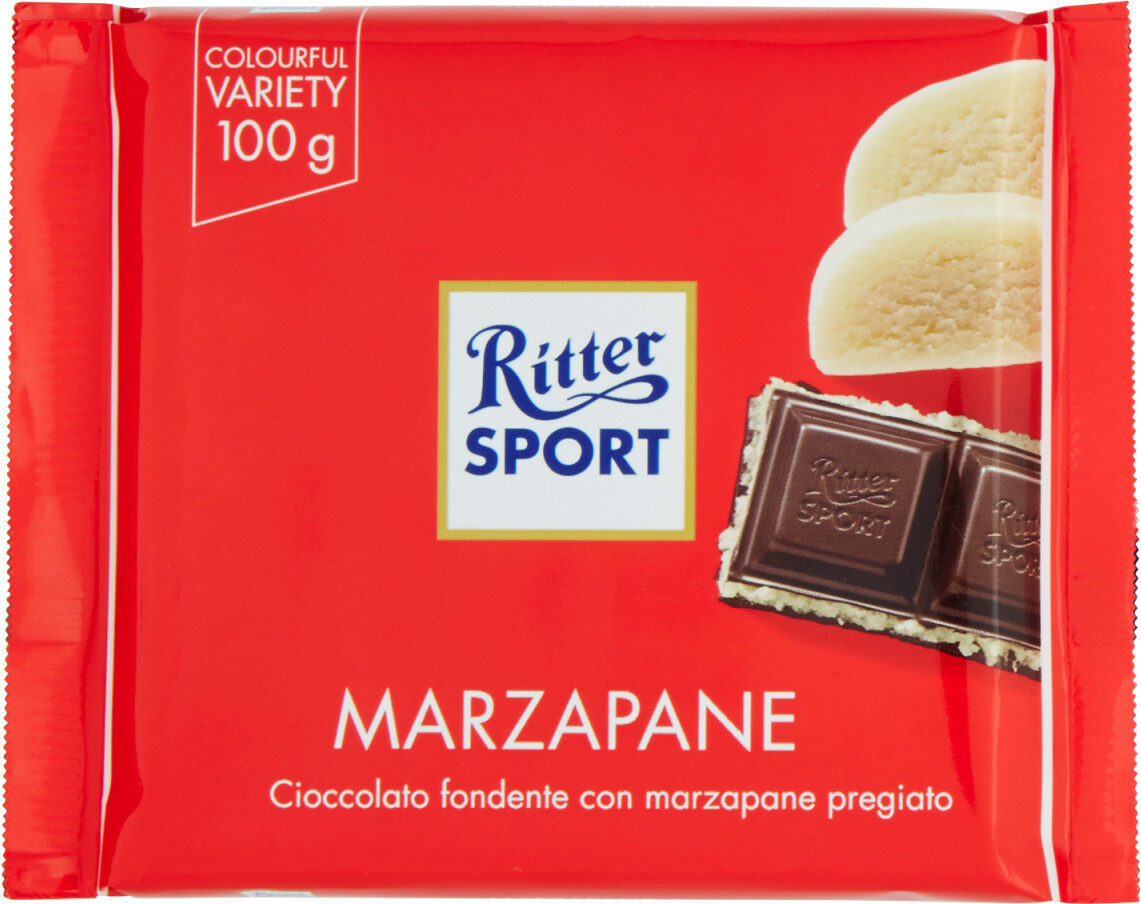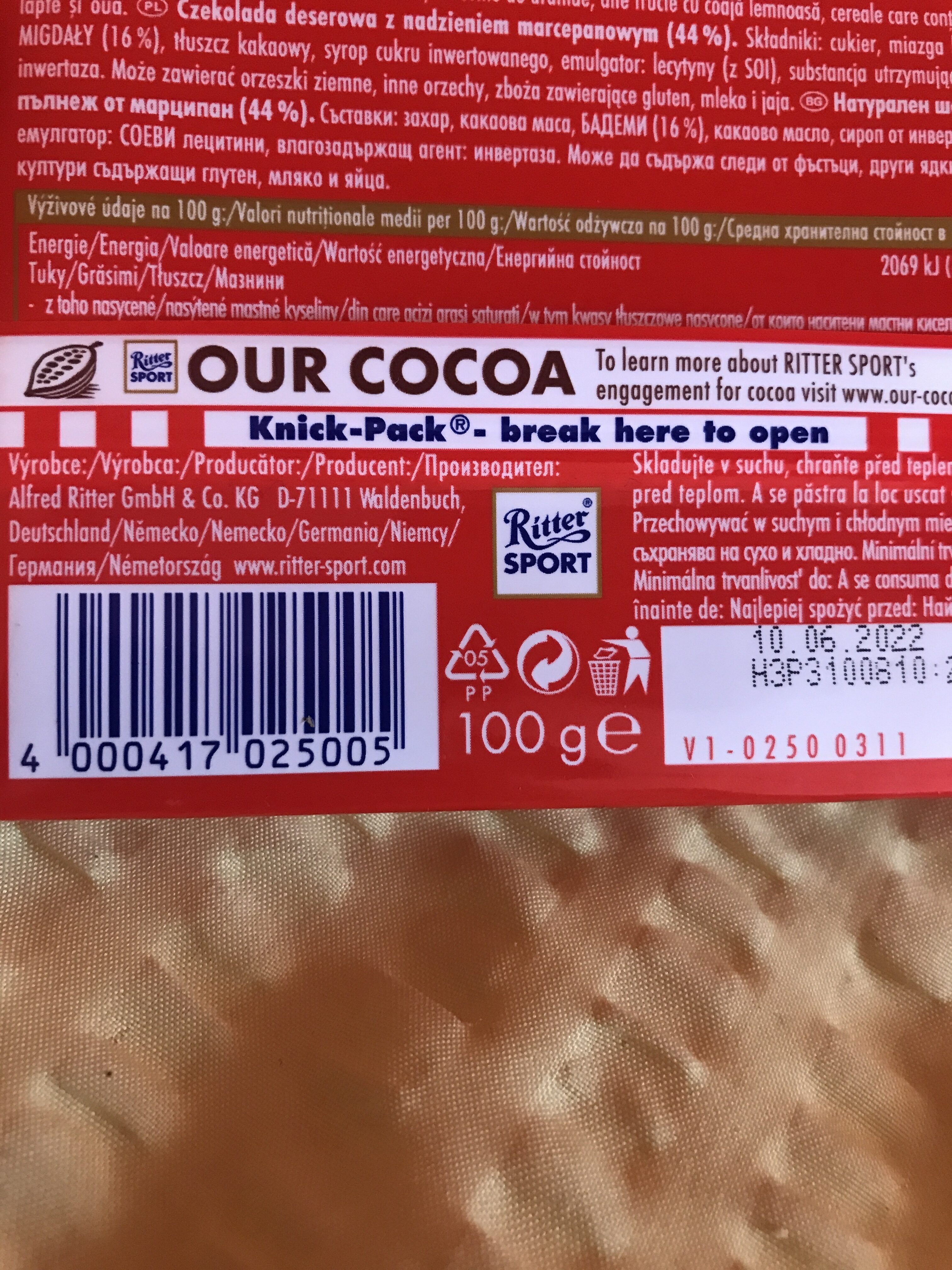Schokolade Marzipan - Ritter Sport - 100g
Aquesta pàgina del producte no està completa. Podeu ajudar a completar-la editant-la i afegint-hi més dades a partir de les fotos ja disponibles, o fent-ne més amb l'aplicació de androide o iPhone / iPad. Gràcies!
×
Codi de barres: 4000417025005 (EAN / EAN-13)
Nom comú: Dark chocolate with marzipan filling
Quantitat: 100g
Empaquetament:
Plàstic, PP 5 - polipropilè, en:Green dot, en:Mixed plastic-packet
Marques: Ritter Sport
Categories: Aliments i begudes amb base vegetal, Aliments amb base vegetal, Snacks, Aperitius dolços, Cacau i derivats, Xocolata, Xocolata negra, en:Filled chocolates, en:Chocolates stuffed with almond paste, en:Filled dark chocolates
Etiquetes, certificacions, premis:
Vegetarià, Vegà, Punt verd, Aliança Tropical

Llocs de fabricació o processament: Deutschland
Enllaç a la pàgina del producte en el lloc oficial del productor: http://www.ritter-sport.de/en/products/d...
Botigues: Lidl, Irma.dk, Delhaize, REWE, Eurospar, Спар, Пятёрочка, Перекресток, Магнит, Визит, Сам Самыч, Willy's, Соседи, Netto, Σκλαβενίτης
Països on es va vendre: França, Grècia, en:Allemagne, en:Belgique, en:Biélorussie, en:Bulgarie, en:Danemark, en:Espagne, en:Pologne, en:Roumanie, en:Royaume-Uni, en:Russie, en:République tchèque, en:Slovaquie, en:Suède
Matching with your preferences
Report a problem
Fonts de dades
Producte afegit per stephane
Última modificació de la pàgina del producte per planteuser.
La pàgina del producte, també editada per alex-ustas, aquilax, arc2, blazern, bleakpatch, countrybot, date-limite-app, ecoscore-impact-estimator, emiljunker, foodrepo, foodvisor, hale, humenike, inf, javichu, kakao, kiliweb, m123, magerharz, mathias, maylord, moon-rabbit, musarana, openfoodfacts-contributors, packbot, prepperapp, quechoisir, quentinbrd, risajanda, sebleouf, sil, spotter, swipe-studio, tacite, tacite-mass-editor, teolemon, thaialagata, twoflower, yuka.Uy9zZ0FmODlwLzhEcGRndndDSHo4L1owNVlXN1VIeTNPODhKSVE9PQ, yuka.ZmJzUVM0QTZxNkl3eE5vVDFTM0V5dGg0d3JXMmZHZUpLZll1SVE9PQ, yuka.sY2b0xO6T85zoF3NwEKvlmhub-rvoheZFj3UhUvQ_MzfDr-4TcNAspbiY6s.













